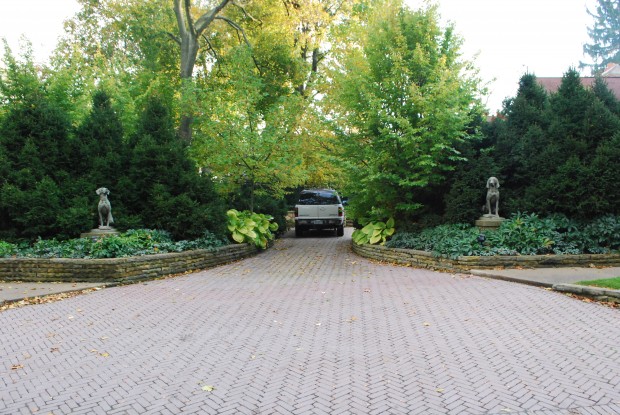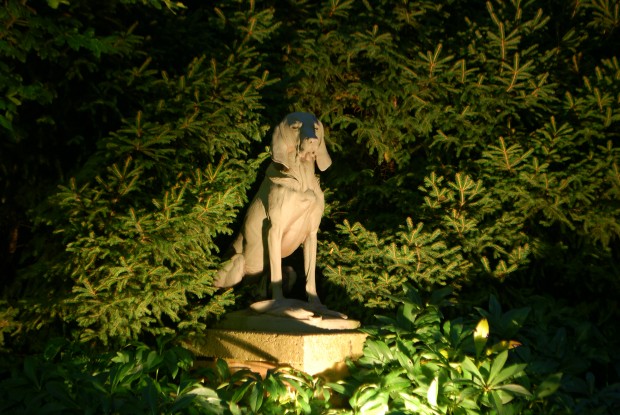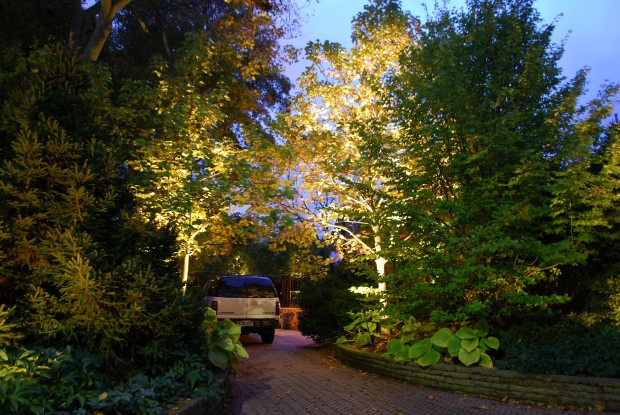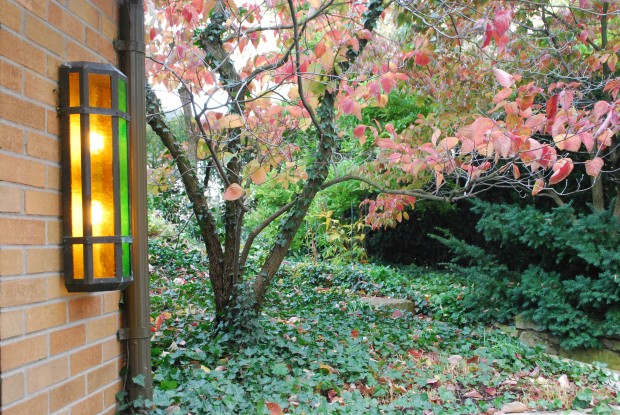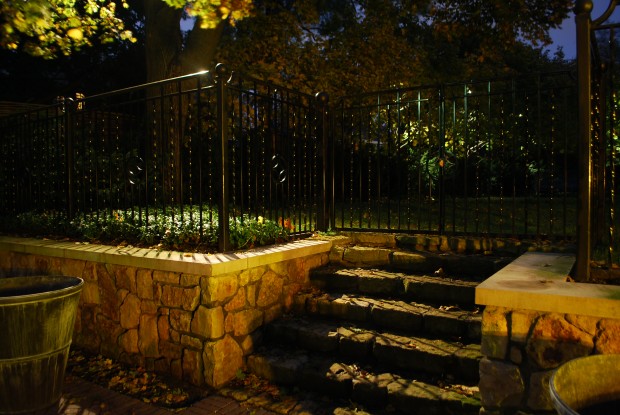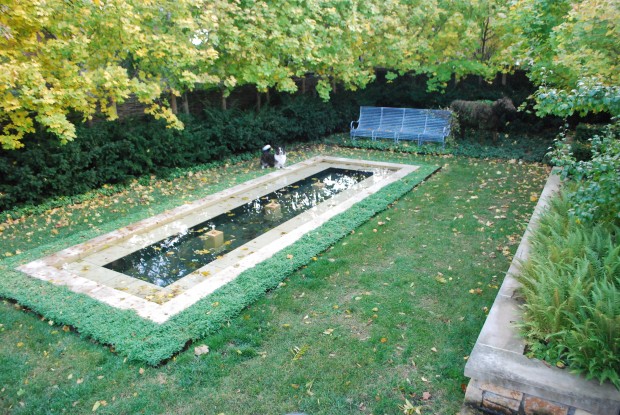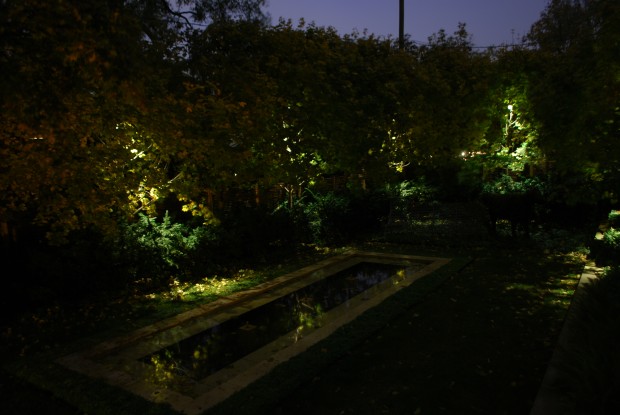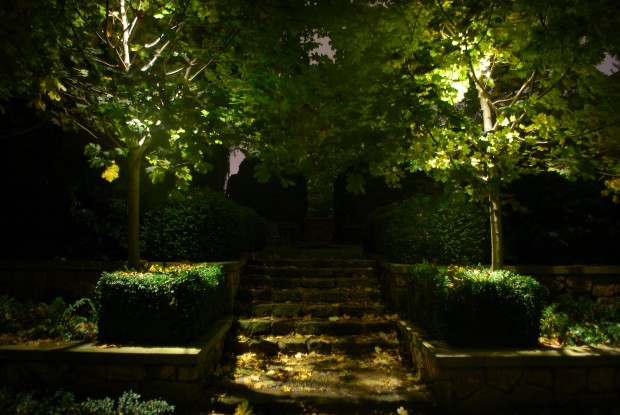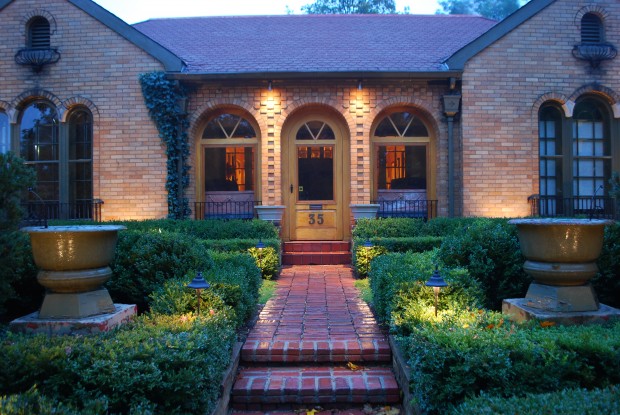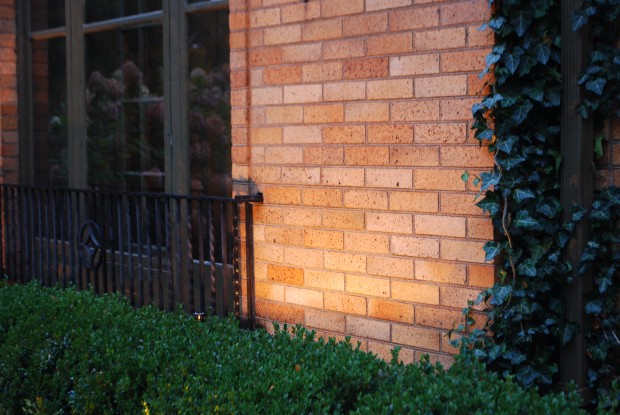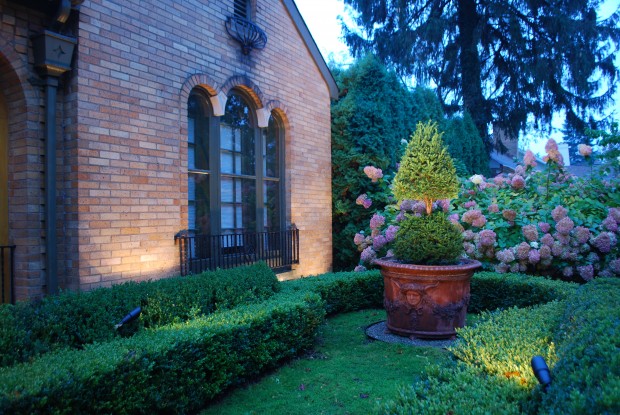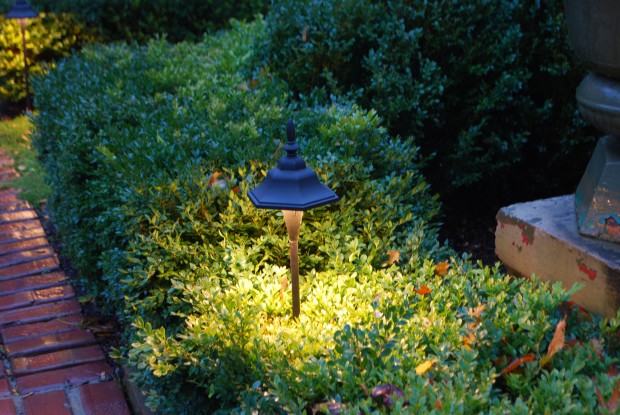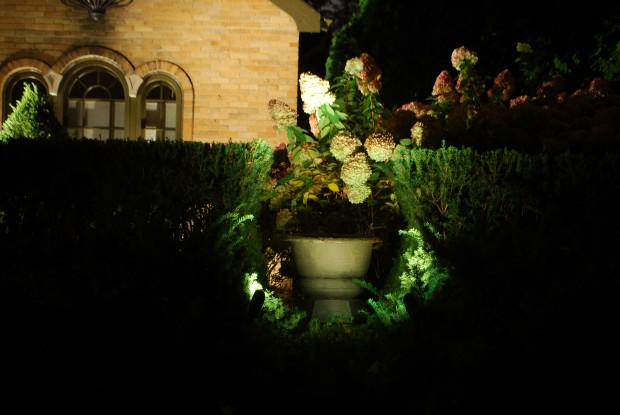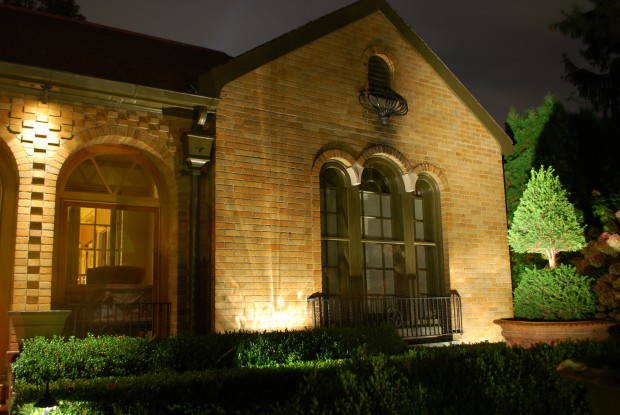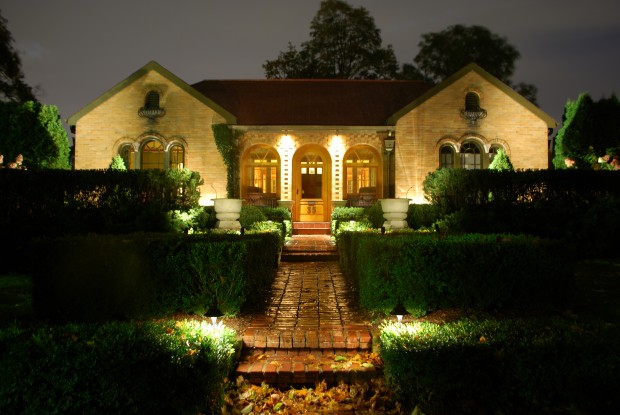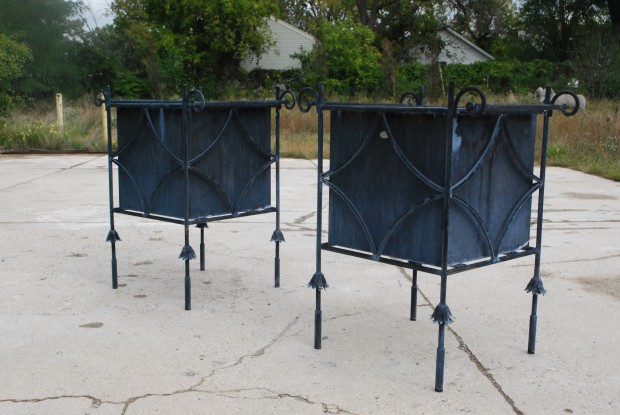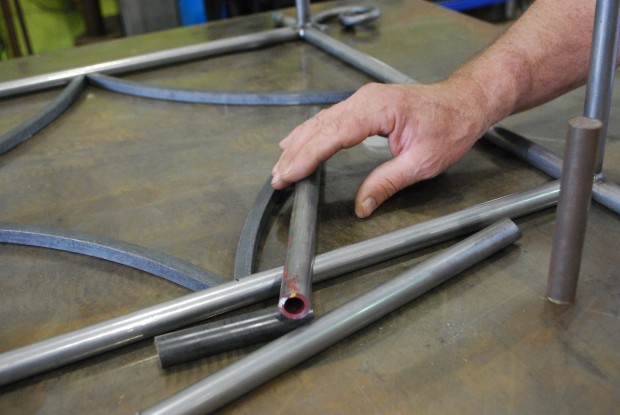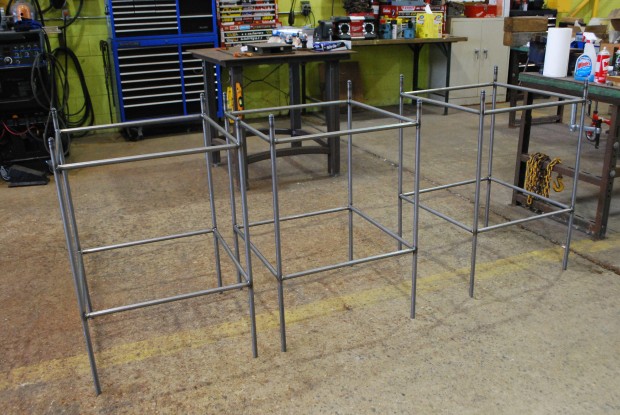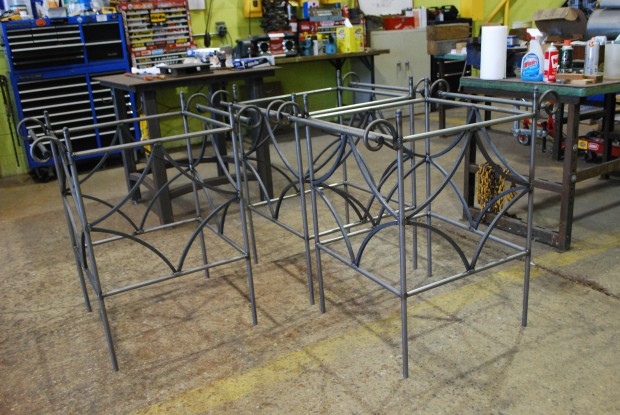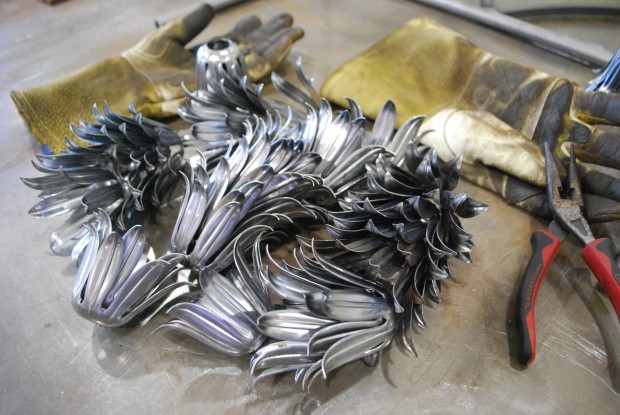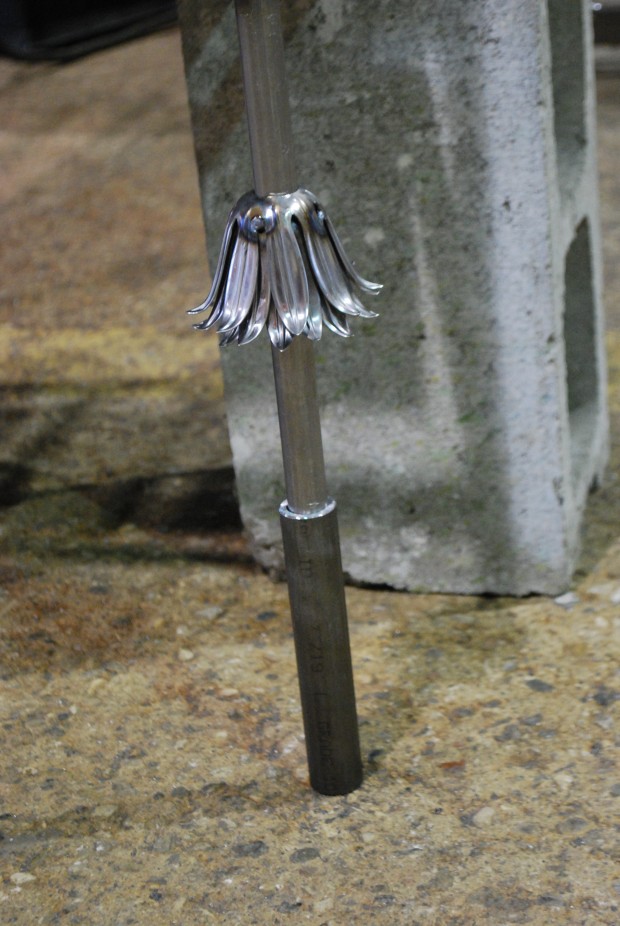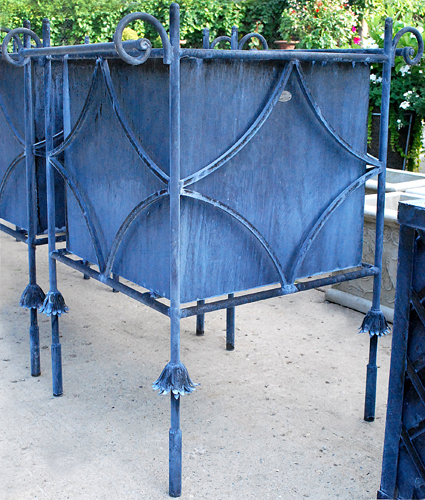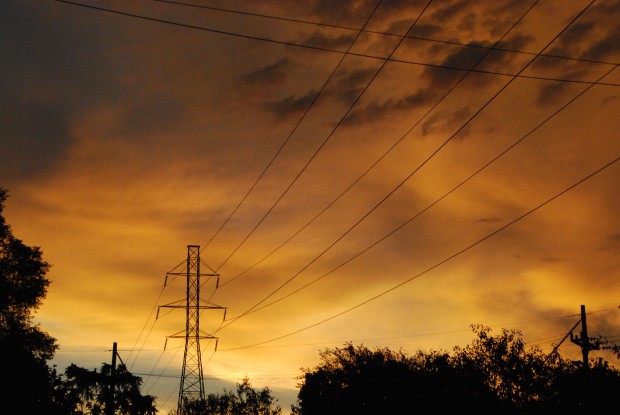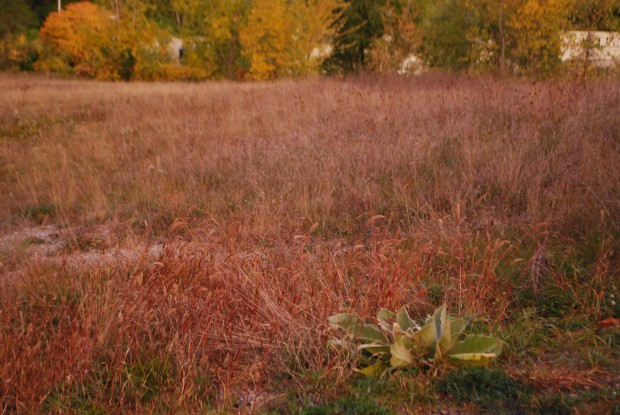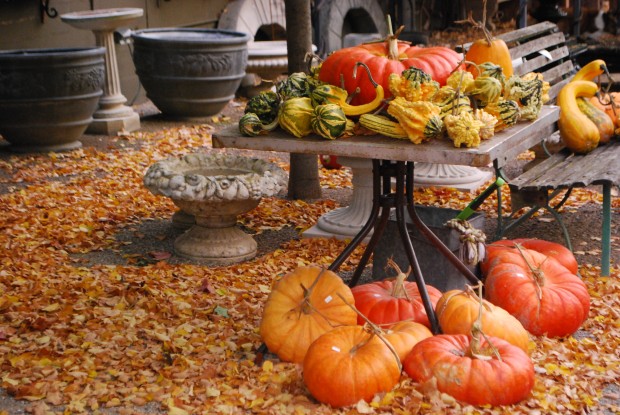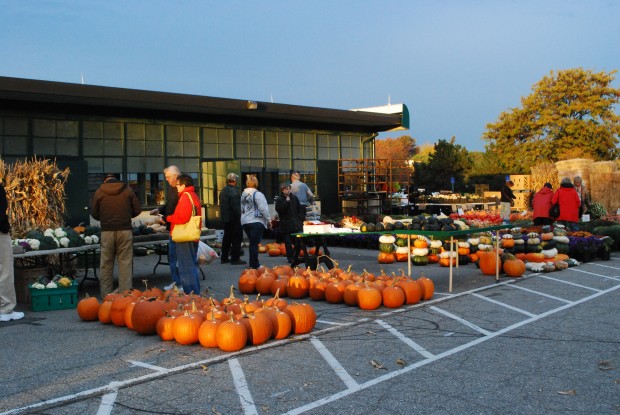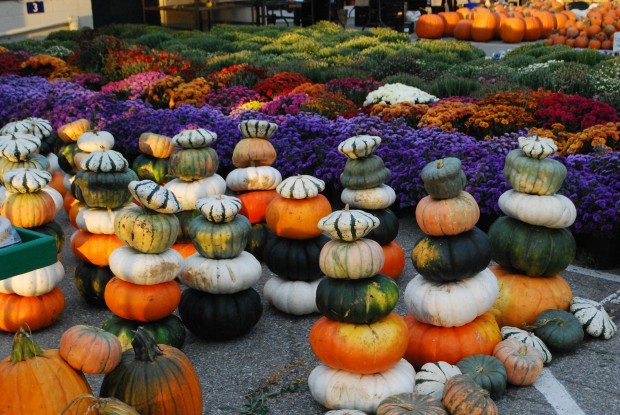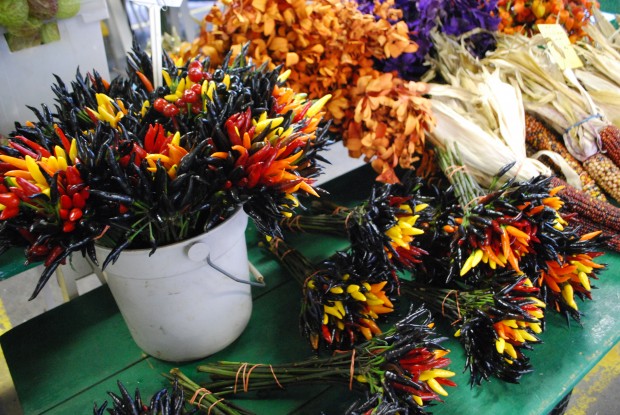I really don’t have a back yard. My property occupies a corner. A front, on two sides-that is a corner lot. I am sure that lack of a private back yard influenced the original design and configuration of my driveway. Made of brick, (I have replaced the deteriorating original brick with concrete brick) it is incredibly wide at the street. (picture those 1930’s Packards turning in) The drive narrows like an hourglass to a little over 8 feet wide, half way up. That narrow gap was an effort to provide a little privacy to the side yard. After 16 years of twice daily practice, I am able to get my Suburban out 99% of the time, without scraping the wheels on the retaining walls.
A pair of cast iron bloodhounds on concrete pedestals are awash in decent sized and fairly mature beds of hellebores-a favorite perennial. I look forward to seeing this every day-coming and going. This makes it a natural candidate for some landscape lighting of the celebratory type. I will soon be coming home after dark, and I don’t want to give up the view of my dogs.
This first pass- the light is too close, and too hot. The intense light creates shadows that make the dog look threatening. That is not my intention. The idea is that I get a welcome home. The winter season would be bearable, but for the gray and the dark.
A pair of Galaxy magnolias are planted in the narrowest part of the drive. They have been there long enough to make a green arbor of magnolia branches overhead. That narrow spot is the darkest spot on my property. A big stand of dark green Picea Mucrunulatum and taxus densiformis make this moment in my landscape feel like a black hole in the winter.
I don’t mind some stronger light here. It helps me to get through the driveway isthmus without incident. OInce the magnolias have dropped their leaves, the light be be much more subtle. This landscape lighting helps me navigate.
A friend found these Arts and Crafts style vintage light fixtures for me-they are perfect on either side of the garage. They are always on. Summer and winter. Day and night. I never tire of seeing them. Early on a spring morning, or late on a summer day, they let me know they are there.
Once the skies go dark, they help light my way. Good landscape lighting is as much about function as beauty. Though no light could ever possibly be as beautiful, in all of its variations, as natural light, the invention of electricity did indeed change the landscape.
A flight of stone stairs begin at the driveway, and end in the upper level fountain garden. My giant old Norway maple is a benign host to 3 spotlights that light up the drive where I park, and those stairs. This light from above illuminates my path to the garage door, and to the upper garden, should I decide to go that route. This lighting is not so much about a favorite landscape feature as it is about safe passage.
Buck shut the fountain down yesterday. It is clogged with leaves, and the weather is too chilly to linger here. This is my most unfavorite day of the gardening year. Water in a garden is enchanting. serene. sparkly and lively. I hate having to give it up. Next weekend he will drain the water from the fountain. I have always disliked the coming of the end for this garden.
Lighting from high in the Princeton Gold maples makes it easy for me to keep track of the Corgis after work. The lighting also transforms this garden into another garden particular to the season. My bedroom has a window that looks out on the fountain. All winter long I keep the shade half up, and the window slightly open. The lighting will allow me to enjoy this part of my garden, no matter the weather.
I do have a flight of stairs to the rose garden. The stone is rough, and uneven. For months after my knee replacement, Buck helped me walk up these stairs. My new knee now-perfect. But I would not walk up there stairs in the dark.
Buck and I usually have dinner late-7:30-sometimes 8:30. I take the Corgis out for a final constitutional, after dinner. Milling around in the complete and utter dark with them-not my idea of a swell time. I love these downlights in my maples. Lighting a landscape might help provide more of what you need from a great garden than what is apparent on a summer day. My idea? Light, whether it be from the sky, or the end result of an electrical connection, is an important element of landscape design. The landscape at night-a different sort landscape experience.
